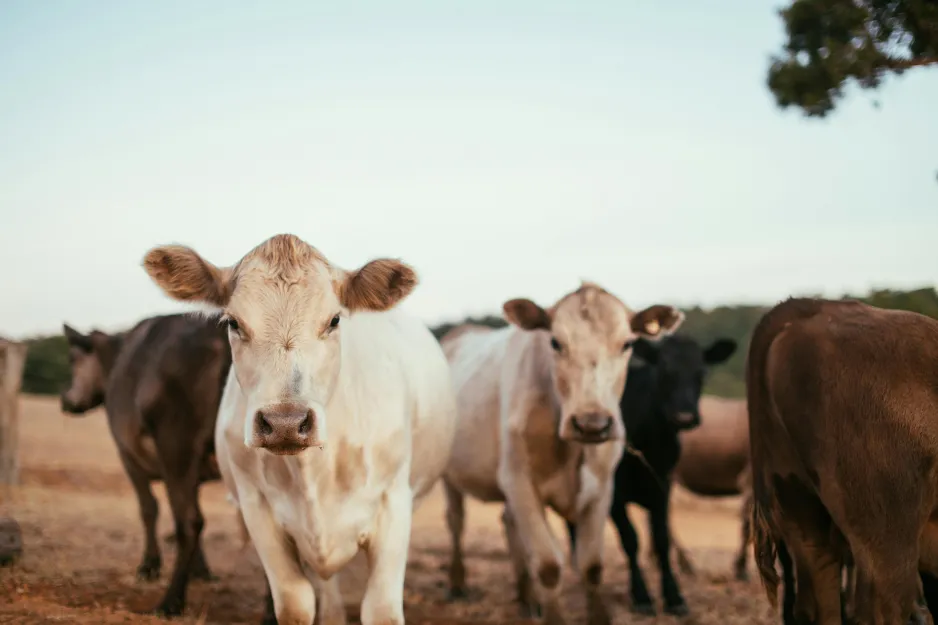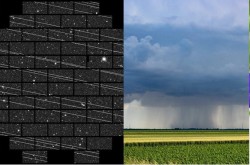2 things you should know about methane reduction and landfill engineering
Meet Renée-Claude Goulet, and Michelle Campbell Mekarski.
They are two of Ingenium’s science advisors, providing expert scientific advice on key subjects relating to the Canada Agriculture and Food Museum, and the Canada Science and Technology Museum.
In this colourful monthly blog series, Ingenium’s science advisors offer up quirky nuggets related to their areas of expertise. For the October edition, they explain the surprisingly complex engineering of landfill sites, and the science of reducing agricultural methane.
More than a pile of garbage: The Surprising Engineering Behind Landfills
Every two weeks on a Sunday night, my family collects our household waste, transfers it into a large bag and leaves it at our curb. By the time we leave the next morning, that bag is usually gone. It didn’t just vanish – it’s heading to a landfill. Landfills are sites that are selected, designed, and built to store our garbage (or “municipal solid waste”) in a way that minimizes harm to our health and the environment.
The art of picking the perfect spot:
Finding a landfill site is not easy. It needs to be large, cost-effective, and to minimize environmental and public health risks. No one wants a landfill near their homes or parks, and it can’t be too close to an airport since it attracts birds. Landfills need to be far away from rivers in case of flooding and can’t be put on sensitive habitats like wetlands. Accessibility is also key since thousands of trucks will access the site daily.
Holes in the ground are expensive to dig and risk contacting the local ground water, so many modern landfills are giant piles of waste instead of holes. However, the pile of garbage can’t get too big, otherwise the pile risks collapsing or sliding.

Garbage dumps have existed near human settlements for nearly all of human history. Modern landfills are still full of garbage and trash, but they are also full of a surprising amount of engineering and science.
Garbage leaks…
Once a landfill site is picked, engineers tackle the challenge of managing the waste while protecting public and environmental health. One major issue is rain, which can filter through the garbage and into the soil. If that garbage juice (or “leachate”) gets into groundwater it can cause big problems. So, modern landfills use barriers – usually thick sheets of plastic, compacted layers of clay, or both – to keep waste and soil separate. Leachate collection systems are also crucial. These systems collect the liquid for treatment before the landfill fills with water.
Liquid isn’t the only thing to escape from landfills. As garbage decomposes, it produces gases like methane and hydrogen sulfide. These gases can create pressure, heat, smells, and even explosions. Landfills use a series of pipes and fans to collect these gases, which can then be vented, burned, or used to create heat or electricity.
Making the most of every inch
Have you ever tried crushing down your garbage so you can fit more in your trash can? The same principle applies to landfills. To maximize space, landfills compact waste. Garbage trucks help a bit by compacting their loads, and landfills often employ enormous compactors to compress the waste as much as possible.
Keeping things tidy
The next issue probably isn’t much of a surprise. Garbage is smelly, attracts pests, and can easily get scattered. To help with this, many modern landfills require that the garbage gets covered daily. This can be done with soil (which takes up space), tarps, or certain types of “cleaner” waste like sand, paper, or shredded tires.
When the landfill is full
Ideally, a landfill should last for many decades. But even with compaction, it will eventually reach capacity and must be closed. The waste must be covered and sealed under layers of membranes and soil so that water and pests can’t get in, and leachate and smells can’t get out. On top, grass and other vegetation is grown to prevent erosion. The site must also be monitored and maintained for decades: collecting, managing, and testing the gases and liquids that escape, and repairing any damage. The amount of care put into these sites means that often they are converted into city parks!
The future of waste
While landfills are a relatively low-impact way to manage solid waste, there’s always room for improvement. Reducing, reusing, and recycling are essential practices for minimizing waste. Even with a well-designed landfill, our goal should be to generate as little garbage and trash as possible. Engineers play a crucial role in this process, but it’s up to all of us to work towards a more sustainable future.
So, next time you toss out your garbage, remember: it’s not just disappearing into thin air. It’s heading to a carefully engineered site where science and technology work together to handle it responsibly.
By Michelle Campbell Mekarski
Moo-ving Forward: The Quest to Cut Methane
Methane might not get as much attention as carbon dioxide in the climate conversation, but as a greenhouse gas, it’s a heavyweight. Methane (CH4) is responsible for an estimated 20 to 30 percent of global warming since the Industrial Revolution. Unlike carbon dioxide (CO2), which can linger in the atmosphere for hundreds of years, methane sticks around for just a decade or so, before turning into CO2 and water. However, methane is more than 25 times better at trapping heat in the atmosphere than CO2. This makes reducing methane emissions, especially from agriculture, a top priority in fighting climate change. But here’s the catch: measuring methane in farming environments is tricky, so progress to reduce it has been slow.
Methane emissions come from both natural and human sources. Around 60 percent of today’s methane comes from human activities, primarily agriculture, fossil fuel production, and organic waste decomposing in landfills. The rest is mainly from wetlands. In Canada, methane emissions from agriculture make up about 10 percent of the country’s total greenhouse gas emissions.
Cows, with their ruminant digestive systems, are among the biggest agricultural methane producers, along with goats and sheep. Inside these animals' stomach – or, more accurately, their four-part stomach – microscopic organisms break down plant material and release methane as a by-product, which the animals then burp out. Micro-organisms decomposing manure in absence of oxygen also release methane. Together, livestock digestion and manure management create a substantial portion of agricultural emissions.

Cattle are not the most efficient feed-converters; about 12 percent of what they eat gets converted to methane gas by microbes in their gut, and is lost to the atmosphere. Ways to reduce methane emissions from cattle aim to hinder the activity of the methane-producing microbes.
Farmers and scientists are actively looking for ways to reduce methane emissions from livestock. One promising solution involves altering diets. By adding certain supplements like fats, oils, and even seaweed to their feed, methane production can be reduced. Selective breeding is another area of interest. Some animals naturally produce less methane because of their genetic makeup. By selecting for these traits, farmers can breed cattle that are more environmentally friendly. There’s also ongoing research into methane-reducing vaccines and anti-microbial agents, which could target the microbes in a cow’s stomach that produce methane in the first place.
Here’s the challenge: while there are several promising ways to reduce methane emissions, it’s tough to know exactly which ones work best because of the difficulty in measuring methane in real-world farm environments. That’s why ongoing innovation in this area is crucial.
Cows, after all, are not stationary sources like leaking gas lines. They roam, graze, and vary in how much methane they produce based on factors like diet, genetics, and activity level. Monitoring emissions accurately across herds and regions is a major challenge, and usually involves labor-intensive, expensive, ground-based monitoring using a range of sensors. There are a few ways to monitor methane emissions in cows, each with their own drawbacks and advantages. By taking measurements through different methods, scientists are able to come up with pretty good estimates and create models that can help us understand if our methane-reducing efforts are having any impacts.
In recent years, the Montreal company GHGSat has revolutionized methane detection. Their 12 small satellites orbiting Earth can monitor methane emissions across thousands of sites every day, making it possible to spot leaks and sources from space. They’ve been able to detect methane emissions from oil and gas production, landfills, and – you guessed it – cows. This is a new approach with a lot of potential for monitoring and measuring methane emissions.
The Canadian government has also launched the Agricultural Methane Reduction Challenge, which aims to fund projects that cut methane emissions in the cow-calf, dairy, and feedlot sectors. At time of writing, there are now 12 semi-finalists working on their ideas and competing for a grand prize to help bring the winning innovation to market.
In short, methane is a climate heavyweight we can’t afford to ignore. While CO2 is the primary culprit of climate change, tackling methane offers a fast-acting way to slow global warming. With new technologies like laser detectors and satellites, and innovative solutions for livestock diets, we’re on the right track. The methane challenge is tough, but the rewards for getting it right are big – for the climate, and for future generations.
By Renée-Claude Goulet








































